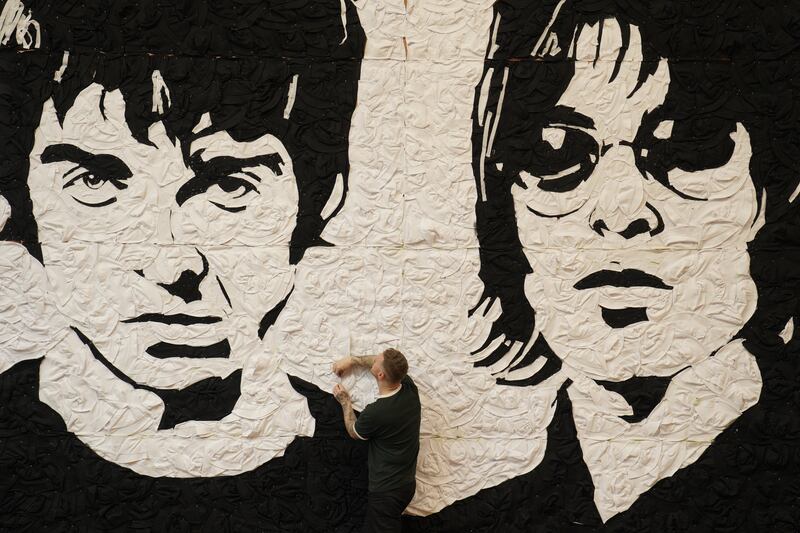Just over 40 years ago, Robert Hughes, the declamatory Australian art critic, attended a retrospective of Nam June Paik’s work at the Whitney Museum in New York city. “Mention video to some people and watch their faces fall,” he wrote in Time magazine. “The cliche of ‘video art’ is a grainy close-up of some UCLA graduate rubbing a cockroach to pulp on his left nipple for 16 minutes while the soundtrack plays amplified tape hiss, backward.”
As it happened, Hughes came to praise the Korean prankster, not to bury him. The work “can involve you and even promote an occasional sense of mystery”, he continued. Here in the next century, that feels like faint praise for a man whose influence has grown as the technologies he exploited have become ever more obsolete.
It is all there in a fine new documentary by Amanda Kim, called Nam June Paik: Moon Is the Oldest TV. Paik is born in 1932 during Japan’s occupation of his home country. His family leave for Hong Kong and then Japan after the outbreak of the Korean War. He studies music at Munich University and becomes caught up in the circles of the avant-garde pioneers Karlheinz Stockhausen and John Cage. Later, in New York, he advances his experiments with television into multimedia experiences a decade ahead of their time.
“I was educating myself at first,” says Kim. “I didn’t know the amount I do now. My interest in him just grew. I’d been exposed to his work. I’d seen it in museums for many, many years, before I even started this project. But when I saw him in front of the camera and listened to how he spoke, I realised his works were far more layered than I had imagined. And also he was so charismatic and funny.”
READ MORE
Kim is right to focus on the humour in Paik’s work. His most famous work – eventually a series – is a video sculpture from 1974 entitled TV Buddha. A statue of the eponymous spiritual figure watches himself watching himself on a portable TV that relays images from a camera above the screen. Paik could not have realised that, some decades in the future, in the era of the selfie, millions would replicate the Buddha’s experience on their telephones. This is just one example of the prescience with which the artist has been credited. That wasn’t his purpose. But so it has transpired. In one striking montage, Kim shows how effects from his early work echo through pop videos of the 1980s and 1990s.
“I spoke to a bunch of people who made videos for MTV and whatnot,” says Kim. “One of his former assistants and students had directed music videos for MTV in the 1980s, in the heyday. He said to me, ‘You know, Nam June influenced the beginning of MTV style.’ That was really Nam June. I don’t think anyone thought: I am going to take a bit of that. It wasn’t a direct influence.”

Watching the film, one is reminded how much his work is defined by the limitations of the technology. We hear how, on first encountering a television, his instinct was to take the back off and poke around inside. The interference patterns and tape-loop experiments could easily be replicated now with a touch of a button, but there would be little point doing so. Part of the appeal is the sense that contemporaneous technology is being tested to the limit. The occasional clunkiness is part of the aesthetic.
“That’s a really interesting question, because that’s something I thought about while making the film,” says Kim. “How do you make a video about a video artist – in the medium he’s using? How do you not confuse people as to what is his work and what is mine? But the limitations of the technology then versus ours now does allow me to show his work while doing my own edits – without confusing people as to what is his and what is mine.”
[ Hugh Linehan: Sixty years of evolution and revolution in videoOpens in new window ]
Kim’s film comes at an interesting time for the wider appreciation of Korean culture. Moon Is the Oldest TV wryly acknowledges that western society was then blithely ignorant of the nation and its art. That is not the case now. We watch Korean films by Hong Sang-soo, Park Chan-wook and Bong Joon-ho. That last director won the best-picture Oscar for Parasite. Squid Game is hot on Netflix. K-pop is a phenomenon. It is hard to escape the notion that Paik was a pioneer in this regard.

“That’s true, and I thought about that the whole time I was making this,” says Kim. “Korean curators attribute Nam June as the first big cultural export – and he paved the way for Korea to become a cultural superpower. Nam June was the one who helped create the Korean pavilion at the Venice Biennale. He brought the Whitney Biennale to Korea for the first time ever. He did so much to bring Korea on to the larger global stage. Then it was, ‘Oh, Korea? Aren’t they a poor country? Aren’t they broken in half?’ It was one of the poorest countries in the 1950s. And it wasn’t that long ago.”
(I am tempted to suggest every aspect of that description of Korea will ring bells with Irish readers, but it is perhaps best not to stretch the comparison.)
Did Paik achieve the fame he deserved before his death in 2006? Just about. The film describes the relative poverty he endured for decades after moving to the United States. But it also notes his involvement with Good Morning, Mr Orwell, a global prank broadcast in 1984, and, 16 years later, a commission to fill the Guggenheim Museum in New York with his installation Modulation in Sync. In 1982, Robert Hughes was already acknowledging him as a founding father of something or other. Paik got there.
“I do think he was appreciated once he passed,” says Kim. “But I will say he isn’t appreciated in the way that Andy Warhol is – or some other artists. And I think, in the history of art, he really does deserve that place.”
Nam June Paik: Moon Is the Oldest TV is released on Friday, May 19th



















